Oculus Rift Virtual Reality Glasses Device
In the summer of 2012, the Okyulus Rift project raised more than $ 2.4 million from Kickstarter, with the first million received in just 36 hours. Virtual reality glasses have not yet been officially released, and now (since September 2012) users have access to only an option for developers with more modest characteristics than the future full version. But the stripped-down model for developers is in great demand, the inventor of the device was even forced to notice that those who wanted could expect Okyulusa 2.0 in 2014.
Virtual reality glasses have a horizontal viewing angle of 90 ° and a diagonal viewing angle of 110 °. The model’s displacement sensor for developers works at a frequency of 1000 hertz, while the prototype had a 250 hertz sensor.
Detailed iFixit website publishedinstructions for the analysis of points indicating the technical details and features of operation. The device received a maintainability rating of 9 points out of 10, where a higher value corresponds to a greater simplicity of disassembly and assembly. Before actually using the glasses, you need to configure them for a specific user. Included with Okyulus is a set of three sets of lenses.
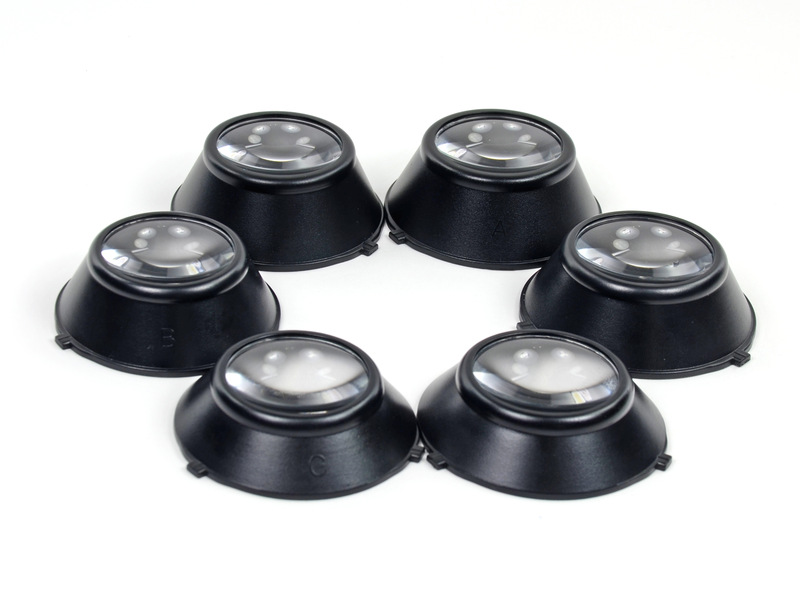
Using a conventional coin, you can adjust the focal length. A guide from wiki.teamfortress.com may be helpful in this case .
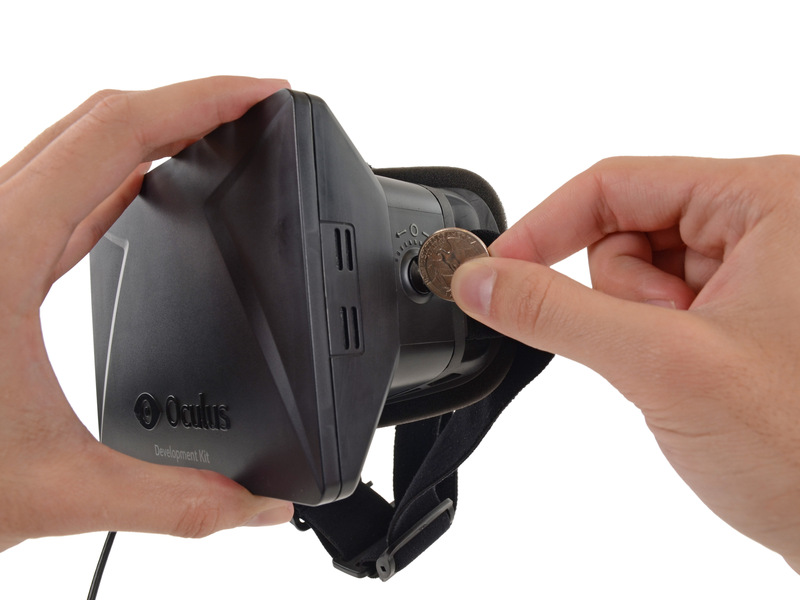
Points are disassembled very simply. Inside, the main part of the glasses is hidden - the 7-inch Innolux HJ070IA-02D screen. Chimei Innolux is Taiwan's largest display maker, rumored to bemay ask Apple for displays for the iPad Mini instead of using Samsung's manufacturing facilities.
The first prototype was built on the basis of a screen diagonal of 5.6 inches (14.2 cm), but the unexpected success at Kickstarter made developers think about the availability of a large number of such displays. In the version for developers, the display has a resolution of 1280 × 800 (each of the two eyes accounts for half, that is, 640 × 800). In the future full version, the screen will have a resolution of at least 1920 × 1080.

On the back of the display is a Himax HX8851 controller .
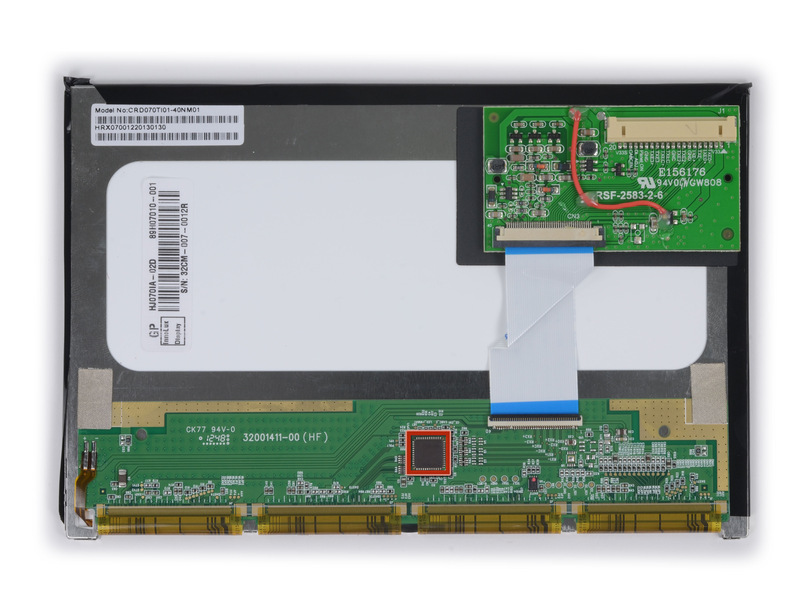
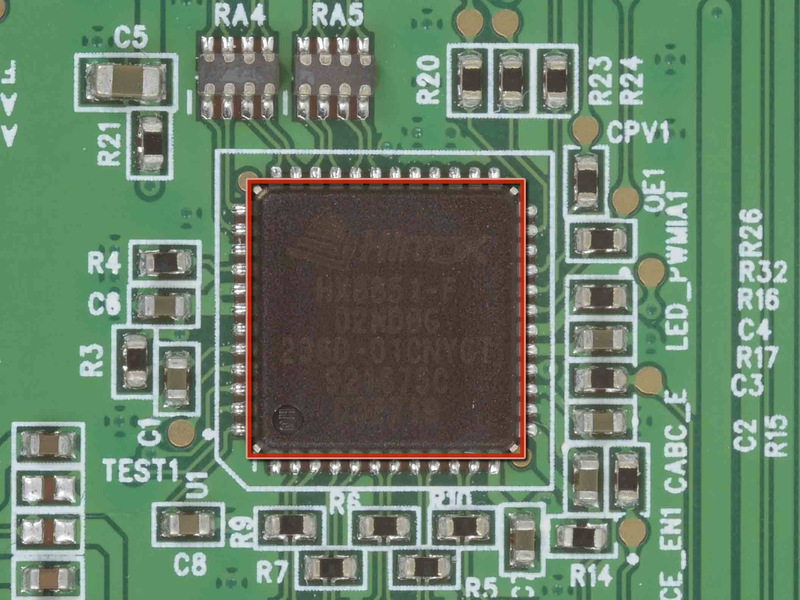
Behind the display is a motion sensor board specially optimizedfor low latency. IFixit editors carefully studied its structure. The STMicroelectronics 32F103C8 ARM Cortex-M3 microcontroller with a 72 MHz processor is used, the Invensense MPU-6000 and the A983 2206 six-axis motion controller (gyro and accelerometer) are supposedly a three-axis magnetometer used to correct errors.
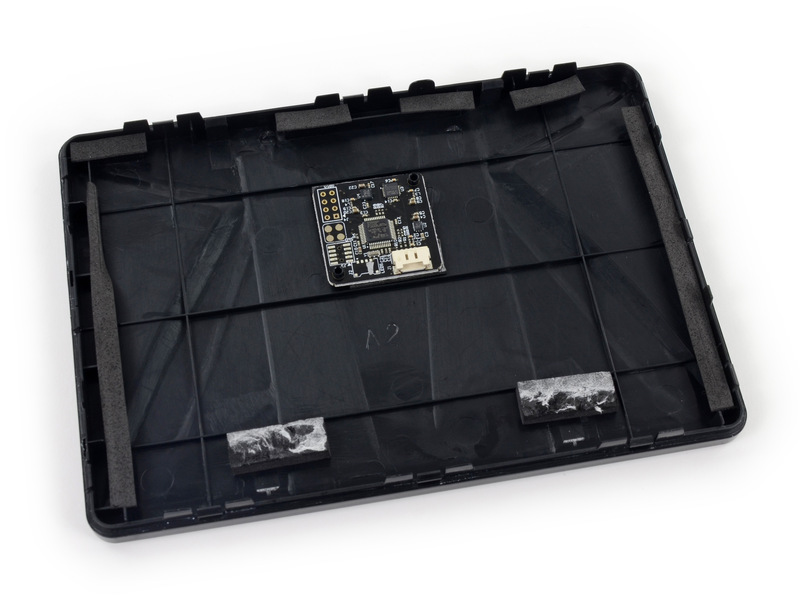
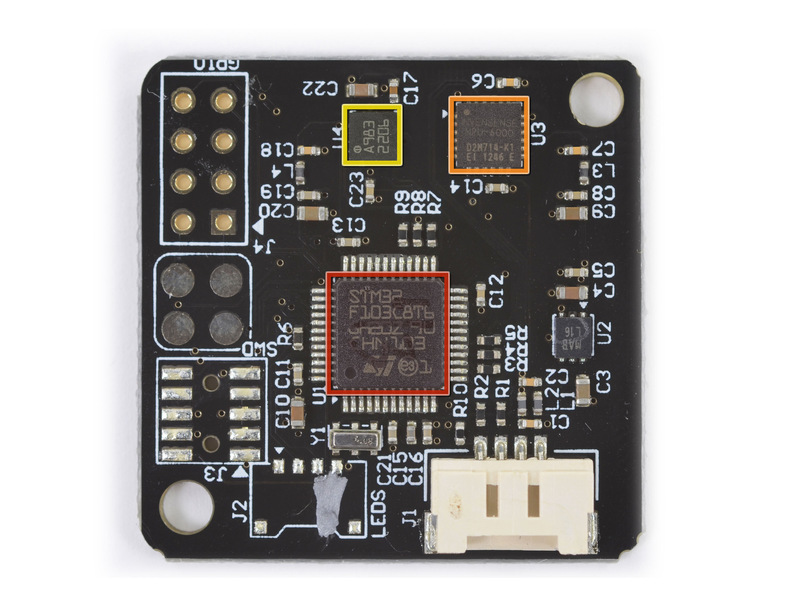
Interestingly, the pads for testing faults are displayed on the back.

Okyulus connects to a computer (and at the moment only the PC platform is supported, although compatibility with game consoles is promised in the distant future) using this monitoring device. From left to right: HDMI, DVI, Mini USB outputs, DC input - additional power for working with computers that are unable to provide the required power to USB. The glasses go DVI.

Like glasses, the box is easy to disassemble. Inside you can find a board with a Realtek RTD2486AD controller, a 256 KB Winbond W25X20CL serial flash memory module, and a Techcode TD1484A synchronous controller
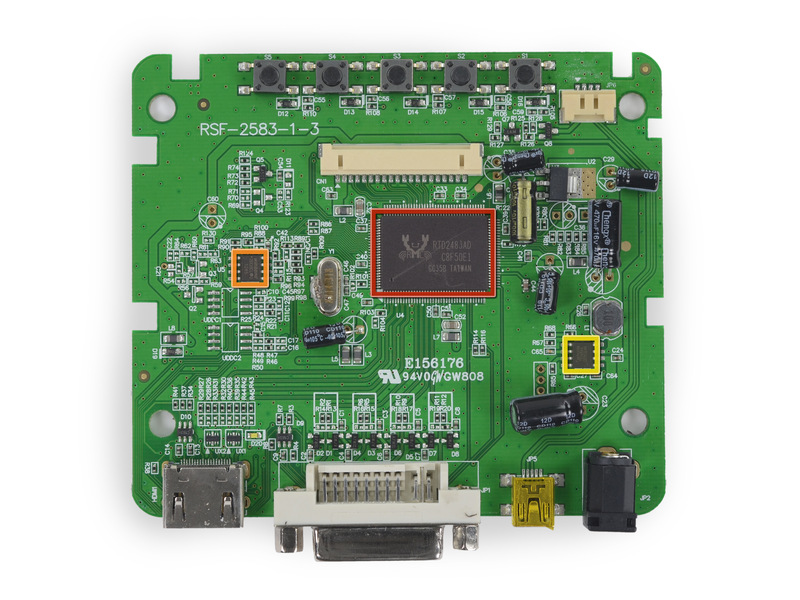
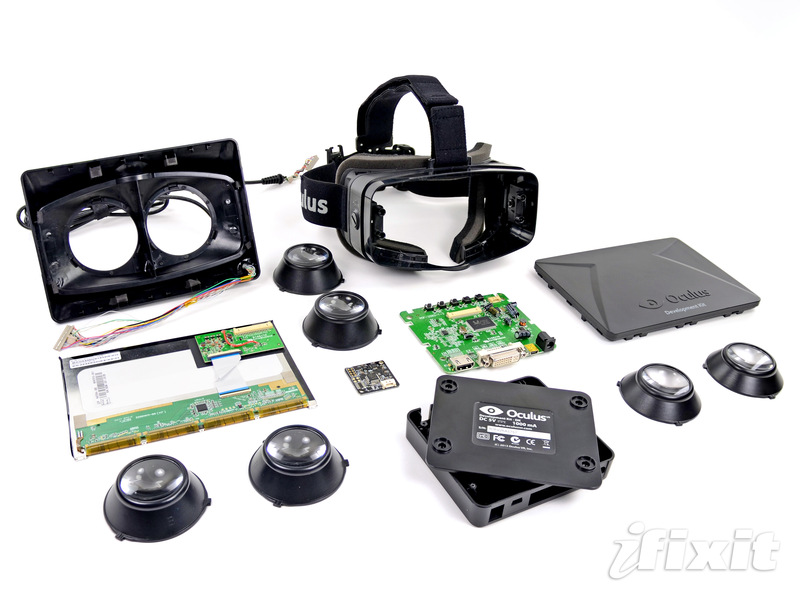
How can I use the trial version of the Oculus for developers now? If you often play Tim Fortress 2, then you may have noticed that some players (usually on foreign servers) wear a hat in the form of virtual reality glasses in the game. (The bug with the work of both eyes when playing for the Demoman is still not fixed.)
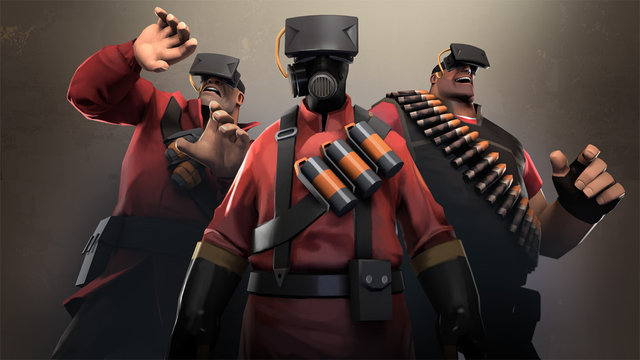
Also, you can always proceed with what is expected of you - the development of applications and games for a nascent device. For example, you can write your own simulator of an interface such as a guillotine.
Virtual reality glasses have a horizontal viewing angle of 90 ° and a diagonal viewing angle of 110 °. The model’s displacement sensor for developers works at a frequency of 1000 hertz, while the prototype had a 250 hertz sensor.
Detailed iFixit website publishedinstructions for the analysis of points indicating the technical details and features of operation. The device received a maintainability rating of 9 points out of 10, where a higher value corresponds to a greater simplicity of disassembly and assembly. Before actually using the glasses, you need to configure them for a specific user. Included with Okyulus is a set of three sets of lenses.

Using a conventional coin, you can adjust the focal length. A guide from wiki.teamfortress.com may be helpful in this case .

Points are disassembled very simply. Inside, the main part of the glasses is hidden - the 7-inch Innolux HJ070IA-02D screen. Chimei Innolux is Taiwan's largest display maker, rumored to bemay ask Apple for displays for the iPad Mini instead of using Samsung's manufacturing facilities.
The first prototype was built on the basis of a screen diagonal of 5.6 inches (14.2 cm), but the unexpected success at Kickstarter made developers think about the availability of a large number of such displays. In the version for developers, the display has a resolution of 1280 × 800 (each of the two eyes accounts for half, that is, 640 × 800). In the future full version, the screen will have a resolution of at least 1920 × 1080.

On the back of the display is a Himax HX8851 controller .


Behind the display is a motion sensor board specially optimizedfor low latency. IFixit editors carefully studied its structure. The STMicroelectronics 32F103C8 ARM Cortex-M3 microcontroller with a 72 MHz processor is used, the Invensense MPU-6000 and the A983 2206 six-axis motion controller (gyro and accelerometer) are supposedly a three-axis magnetometer used to correct errors.


Interestingly, the pads for testing faults are displayed on the back.

Okyulus connects to a computer (and at the moment only the PC platform is supported, although compatibility with game consoles is promised in the distant future) using this monitoring device. From left to right: HDMI, DVI, Mini USB outputs, DC input - additional power for working with computers that are unable to provide the required power to USB. The glasses go DVI.

Like glasses, the box is easy to disassemble. Inside you can find a board with a Realtek RTD2486AD controller, a 256 KB Winbond W25X20CL serial flash memory module, and a Techcode TD1484A synchronous controller


How can I use the trial version of the Oculus for developers now? If you often play Tim Fortress 2, then you may have noticed that some players (usually on foreign servers) wear a hat in the form of virtual reality glasses in the game. (The bug with the work of both eyes when playing for the Demoman is still not fixed.)

Also, you can always proceed with what is expected of you - the development of applications and games for a nascent device. For example, you can write your own simulator of an interface such as a guillotine.
